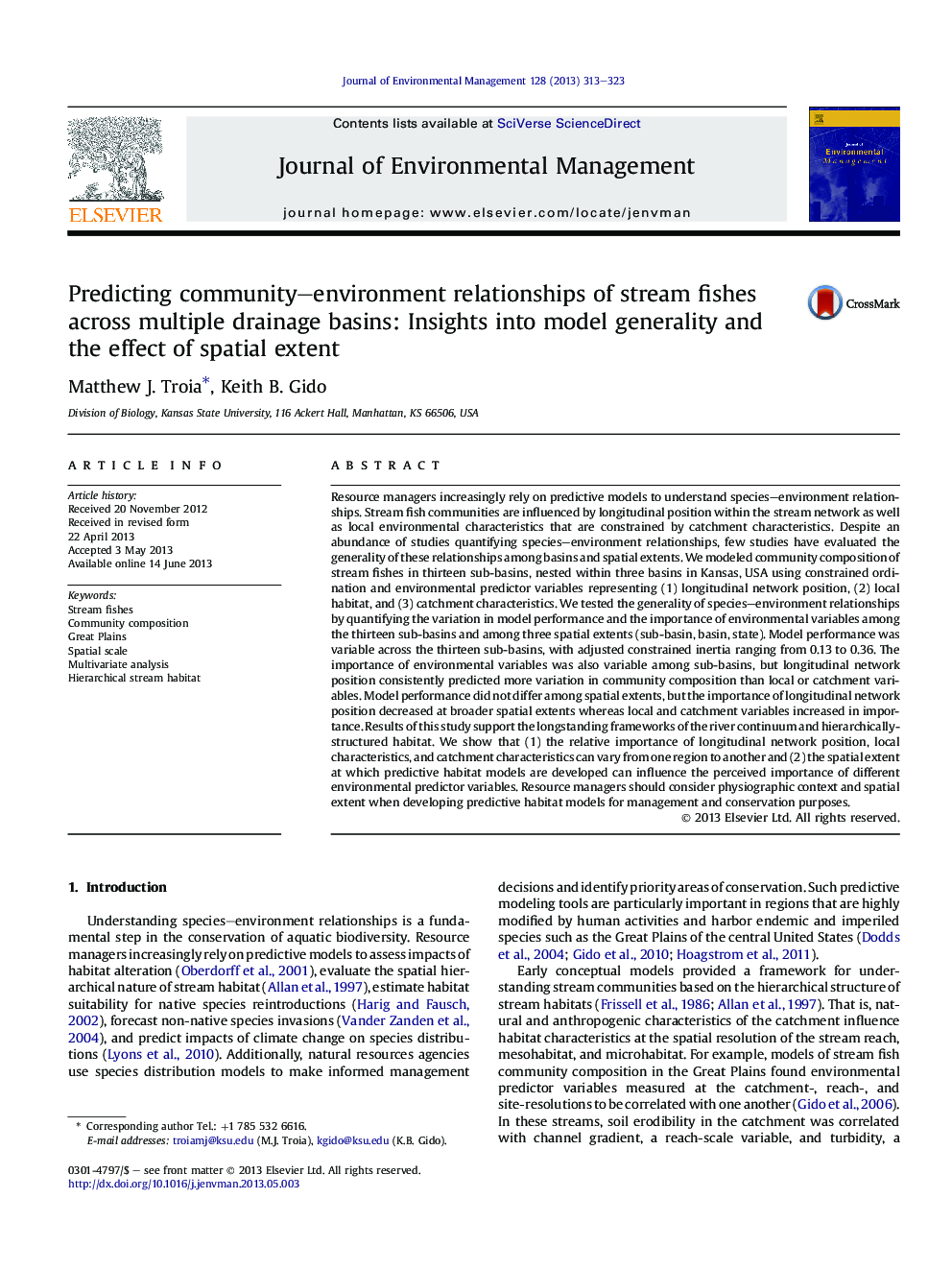| Article ID | Journal | Published Year | Pages | File Type |
|---|---|---|---|---|
| 7484331 | Journal of Environmental Management | 2013 | 11 Pages |
Abstract
Resource managers increasingly rely on predictive models to understand species-environment relationships. Stream fish communities are influenced by longitudinal position within the stream network as well as local environmental characteristics that are constrained by catchment characteristics. Despite an abundance of studies quantifying species-environment relationships, few studies have evaluated the generality of these relationships among basins and spatial extents. We modeled community composition of stream fishes in thirteen sub-basins, nested within three basins in Kansas, USA using constrained ordination and environmental predictor variables representing (1) longitudinal network position, (2) local habitat, and (3) catchment characteristics. We tested the generality of species-environment relationships by quantifying the variation in model performance and the importance of environmental variables among the thirteen sub-basins and among three spatial extents (sub-basin, basin, state). Model performance was variable across the thirteen sub-basins, with adjusted constrained inertia ranging from 0.13 to 0.36. The importance of environmental variables was also variable among sub-basins, but longitudinal network position consistently predicted more variation in community composition than local or catchment variables. Model performance did not differ among spatial extents, but the importance of longitudinal network position decreased at broader spatial extents whereas local and catchment variables increased in importance. Results of this study support the longstanding frameworks of the river continuum and hierarchically-structured habitat. We show that (1) the relative importance of longitudinal network position, local characteristics, and catchment characteristics can vary from one region to another and (2) the spatial extent at which predictive habitat models are developed can influence the perceived importance of different environmental predictor variables. Resource managers should consider physiographic context and spatial extent when developing predictive habitat models for management and conservation purposes.
Related Topics
Physical Sciences and Engineering
Energy
Renewable Energy, Sustainability and the Environment
Authors
Matthew J. Troia, Keith B. Gido,
